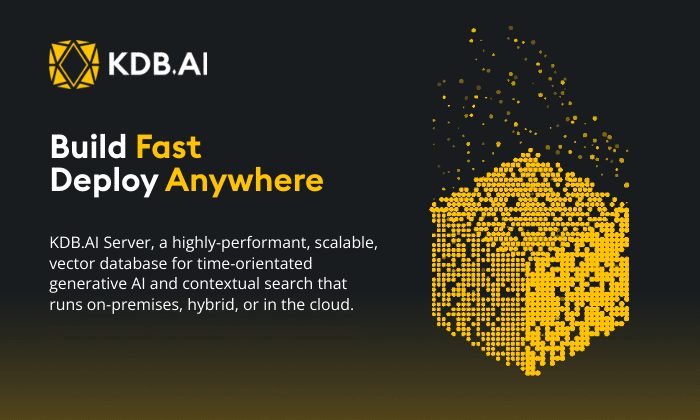by Mark Millar
Automotive: An industry ready to embrace the challenges and opportunities that digital transformation presents.
I recently had the opportunity to represent KX as a co-sponsor of Reuters Automotive Summit. The event provided great insights from some of the most senior automotive, mobility and technical leaders across industry. There was a focus on critical topics including autonomous vehicles (AV), connected vehicles, electric vehicles (EV) and mobility-as-a-service (MaaS). I wanted to share some insights on where data-driven decision making is driving competitive advantage and opportunities for the automotive sector.
Automotive OEM’s are reinventing themselves as software-centric organizations
Ford Motor Company’s new Chief Executive Officer James D. Farley is putting a “digital economic view” at the center of his organization and views “connectivity as more disruptive than electrification”. An organization known for its deep roots in manufacturing is now resembling that of a software giant. The datasets coming off Ford vehicles are so large, coupled with the demands for AI, that they are now focused on building new in-house software platforms and have grown their talent to 15,000 software engineers. Over the air (OTA) updates are offering new software subscription models, where Ford realizes that their connected car data is worth billions of dollars.
Ola Källenius, Chairman of the Board of Management, Daimler AG and Mercedes AG plans to transition half of their products to electric by 2030. An organization that positions itself as reinventing the car, is now reinventing itself. Aiding this transformation is a view that software and electronic architecture form the central brain and nervous system within their vehicles. For Daimler AG and Mercedes AG, reinvention comes in the form of self-built proprietary in-house software systems, becoming masters of their own integration and developing partnerships with technology organizations like Nvidia.
The race towards an electrified future provides new digital opportunities
Electrification was a hot topic that dominated thought leadership across the summit, and many pointed directly or indirectly to the success of Tesla. Key drivers to electrification included increasing global emission and environmental regulations, shifting global markets and a forthcoming ban on traditional combustion engine development by 2030. Examples abound of this transition include Nissan’s M.O.V.E plan, General Motors’ multi-billion-dollar investment in electric vehicles and PSA Group’s ambition to offer 30-60% mixed EVs by 2025. There is a race to finish first in this electrified future.
Electric vehicle development is providing a framework on which to offer mobility-as-a-service. Renault-Nissan-Mitsubishi are accelerating this requirement by working with a combination of technology and automotive organizations. Michael Bakunin, Director, Mobility Services Partnerships, pointed to the importance of having direct interfaces with customers through these new digital offerings. In its move from its traditional B2B to B2C offerings, Stephan Zeh, EVP Audi Mobility Service discussed the growth of their vehicle on-demand services, that are built with the Audi customer in mind.
Aside from software developments, new electric vehicle platforms are offering other interesting opportunities. As an example, Daniel Barrel, CEO & Co-Founder, REE Automotive is focused on providing, “a cornerstone from which a service provider, OEM and mobility player can jointly develop electrification”. Through collection and analysis of data generated from vehicle sensors, REE Automotive are integrating this into a more holistic structure of mobility and creating new value-added offerings.
As vehicles become data centers on wheels, their data drives competitive advantage.
A term that struck me most was that vehicles are becoming, “data centers on wheels”. Chet Babla, Vice President, Automotive Business, Arm, discussed the need to balance computing performance, energy efficiency and safety with practicality around vehicle design and optimization of their data pipelines. There is significant value in harnessing the data that is generated from the sensors deployed on vehicles. Examples may include; providing diagnostic or prognostics information to manufacturers, using data to better improve road safety, supporting decisions on fuel or cost efficiency and offering new fleet management services for vehicles.
Wejo is supporting over 18 million live vehicles on their Wejo ADEPT platform, they have collected over 200 billion miles of data and have processed over 5 trillion data points. Richard Barlow, CEO of Wejo, noted the importance of developing strong data engineering expertise to drive value from all this data.
Hyundai are focused on becoming a “Smart Mobility Solution Provider” and are creating a mobility services platform that offers a framework on which to build new digital services for customers and third parties. Driven by a culture of “Open Innovation”, Dr. Youngcho Chi, President & Chief Innovation Officer, Hyundai, has ambitious goals to secure 10 million active connected users in the next 2 years
Edge computing, digital twin and connectivity are key enabling concepts
There are, however, challenges associated with harnessing insights from vehicle data. To put perspective into the scale of this challenge, Dr. Prashant Tiwari, Director, Intelligent Connected Division, Toyota InfoTech Labs, highlighted that if a vehicle generates 1GB/ month and there are 100 million connected vehicles on the road by 2025, coupled with new data-driven use cases, this suggests data volumes in the order of 1-10 Exabytes/ month of network traffic. Harnessing data insight from fleet scale systems requires the automotive sector to be able to support a higher volume and frequency of data, solve network traffic congestion and limit impacts on quality of service (QoS).
Vehicle level edge computing is providing distributed computing and analytics opportunities close to or at the source of where data is generated. The edge also supports offloading cloud processes to reduce latency. Edge data processing reduces latency and cost by tapping into local rather than cloud-based compute capacity. Digital twin provides a foundation to enable a digital replica of physical vehicles and to pave a way forward for new intelligent driven customer services i.e., monitoring, prediction, AI and simulation.
There is significant value in wider adoption of 5G and improved connectivity. Autonomous vehicles will be large consumers of 5G, where networks are required to support high data-intensive operations and enable V2X (vehicle to everything) opportunities. Andy Brady, Vice President of Wireless Enterprise, Verizon, believes that, “Digital transformation, industry 4.0 and innovation, has necessitated the need to handle large volumes of data with minimal delay”.
As the automotive industry embraces the disruption of traditional business models, practitioners are driven by opportunities afforded by autonomous vehicles (AV), connected vehicles, electric vehicles (EV) and mobility-as-a-service (MaaS). Those that are pushing forward the agenda for the car of the future are also those ready to embrace these new opportunities. As consumer requirements shift, we see the pace of digital transformation rapidly increase. Software centric approaches are enabling automotive organizations to remain competitive in this dynamic, exciting and ever-changing landscape.







